Views Of Pluto
Views of Pluto
10 Images to Celebrate the Historic Exploration of the Pluto System
One year ago, our New Horizons mission made history by exploring Pluto and its moons – giving humankind our first close-up look at this fascinating world on the frontier of our solar system.

Since those amazing days in July 2015, the New Horizons spacecraft has transmitted numerous images and many other kinds of data home for scientists and the public alike to study, analyze, and just plain love. From Pluto’s iconic “heart” and sweeping ice-mountain vistas to its flowing glaciers and dramatic blue skies, it’s hard to pick just one favorite picture. So the mission team has picked 10 – and in no special order, placed them here.
Click the titles for more information about each image. You’ve seen nine of them before, and the team added a 10th favorite, also sure to become one of New Horizons’ “greatest hits.”
Vast Glacial Flows

In the northern region of Pluto’s Sputnik Planum, swirl-shaped patterns of light and dark suggest that a surface layer of exotic ices has flowed around obstacles and into depressions, much like glaciers on Earth.
Jagged Ice Shorelines and Snowy Pits

This dramatic image from our New Horizons spacecraft shows the dark, rugged highlands known as Krun Macula (lower right), which border a section of Pluto’s icy plains.
Blue Skies

Pluto’s haze layer shows its blue color in this picture taken by the New Horizons Ralph/Multispectral Visible Imaging Camera (MVIC). The high-altitude haze is thought to be similar in nature to that seen at Saturn’s moon Titan.
Charon Becomes a Real World

At half the diameter of Pluto, Charon is the largest satellite relative to its planet in the solar system. Many New Horizons scientists expected Charon to be a monotonous, crater-battered world; instead, they’re finding a landscape covered with mountains, canyons, landslides, surface-color variations and more.
The Vistas of Pluto

Our New Horizons spacecraft looked back toward the sun and captured this near-sunset view of the rugged, icy mountains and flat ice plains extending to Pluto’s horizon. The backlighting highlights over a dozen layers of haze in Pluto’s tenuous but distended atmosphere.
The Dynamic Duo: Pluto and Charon in Enhanced Color

The color and brightness of both Pluto and Charon have been processed identically to allow direct comparison of their surface properties, and to highlight the similarity between Charon’s polar red terrain and Pluto’s equatorial red terrain. Pluto and Charon are shown with approximately correct relative sizes, but their true separation is not to scale.
Strange Snakeskin Terrain

A moment’s study reveals surface features that appear to be texturally ‘snakeskin’-like, owing to their north-south oriented scaly raised relief. A digital elevation model created by the New Horizons’ geology shows that these bladed structures have typical relief of about 550 yards (500 meters). Their relative spacing of about 3-5 kilometers makes them some of the steepest features seen on Pluto.
Pluto’s Heart

This view is dominated by the large, bright feature informally named the “heart,” which measures approximately 1,000 miles (1,600 kilometers) across. The heart borders darker equatorial terrains, and the mottled terrain to its east (right) are complex. However, even at this resolution, much of the heart’s interior appears remarkably featureless—possibly a sign of ongoing geologic processes.
Far Away Snow-Capped Mountains

One of Pluto’s most identifiable features, Cthulhu (pronounced kuh-THU-lu) stretches nearly halfway around Pluto’s equator, starting from the west of the great nitrogen ice plains known as Sputnik Planum. Measuring approximately 1,850 miles (3,000 kilometers) long and 450 miles (750 kilometers) wide, Cthulhu is a bit larger than the state of Alaska.
Colorful Composition Maps of Pluto

The powerful instruments on New Horizons not only gave scientists insight on what Pluto looked like, their data also confirmed (or, in many cases, dispelled) their ideas of what Pluto was made of. These compositional maps – assembled using data from the Linear Etalon Imaging Spectral Array (LEISA) component of the Ralph instrument – indicate the regions rich in ices of methane (CH4), nitrogen (N2) and carbon monoxide (CO), and, of course, water ice (H2O).
Make sure to follow us on Tumblr for your regular dose of space: http://nasa.tumblr.com
More Posts from Intergalacticnerd and Others
Solar System: 2016 Preview
What do we have planned for 2016? A return to the king of planets. A survey of mysterious Ceres. More postcards from Pluto. Anyone who follows solar system exploration in 2016 is in for quite a ride. Last year was one for the record books – and now here are 10 things to look forward to in the new year. See also: what we have planned agency wide for 2016.
Juno Arrives at Jupiter

July 4, 2016 is arrival day for the Juno mission, the first sent expressly to study the largest planet in the solar system since our Galileo mission in the 1990s. Humans have been studying Jupiter for hundreds of years, yet many basic questions about the gas world remain: How did it form? What is its internal structure? Exactly how does it generate its vast magnetic field? What can it tell us about the formation of other planets inside and outside our solar system? Beginning in July, we’ll be a little closer to the answers.
OSIRIS-REx Takes Flight
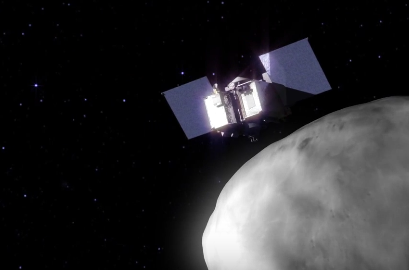
The OSIRIS-REx mission, short for Origins-Spectral Interpretation-Resource Identification-Security-Regolith Explorer, sets sail for an asteroid in September. The spacecraft will use a robotic arm to pluck samples from the asteroid Bennu to help better explain our solar system’s formation and even find clues to how life began.
Dawn Sees Ceres Up Close

After an odyssey of many years and millions of miles, in December the Dawn spacecraft entered its final, lowest mapping orbit around the dwarf planet Ceres. The intriguing world’s odd mountains, craters and salty deposits are ready for their close-ups. We can expect new images of the starkly beautiful surface for months.
Cassini Commences Its Grand Finale

In late 2016, the Cassini spacecraft will begin a daring set of orbits called the Grand Finale, which will be in some ways like a whole new mission. Beginning this year and extending into next, the spacecraft will repeatedly climb high above Saturn’s poles, flying just outside its narrow F ring 20 times. After a last targeted Titan flyby, the spacecraft will then dive between Saturn’s uppermost atmosphere and its innermost ring 22 times. As Cassini plunges past Saturn, the spacecraft will collect rich and valuable information far beyond the mission’s original plan.
New Horizons Sends More Postcards from Pluto

We have stared slack-jawed at the images and discoveries from last year’s Pluto flyby, but the fact is that most of the data that New Horizons collected remains on board the spacecraft. In 2016, we’ll see a steady release of new pictures — and very likely some expanded answers to longstanding questions.
Mars Missions March Forward
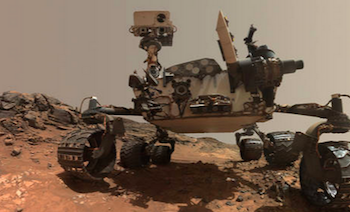
With five of our missions continuing their Martian quests, 2016 should be a good year for discoveries on the Red Planet.
Mars Odyssey
Mars Opportunity
Mars Reconnaissance Orbiter
Mars Curiosity
MAVEN
Mercury Transits the Sun

A transit is a very rare astronomical event in which a planet passes across the face of the sun. In May, Mercury will transit the sun, on of only thirteen Mercury transits each century on average.
LRO Keeps an Eagle Eye On the Moon

The Lunar Reconnaissance Orbiter (LRO) will extend its run in 2016, scanning the moon’s surface with its sharp-eyed instruments, investigating everything from lava tube skylights to changes at the Apollo landing sites.
Spacecraft Fly Under Many Flags

Our partner agencies around the world will be flying several new or continuing planetary missions to destinations across the solar system:
Akatsuki at Venus
ExoMars
Mars Express
Mars Orbiter Mission
Rosetta at Comet 67/P
Technology Demonstration Missions Push the Envelope

We’re always looking for new frontiers on distant worlds, as well as the technology that will take us there. This year, several missions are planned to take new ideas for a spin in space:
Deep Space Atomic Clock
NODES
LDSD
Make sure to follow us on Tumblr for your regular dose of space: http://nasa.tumblr.com
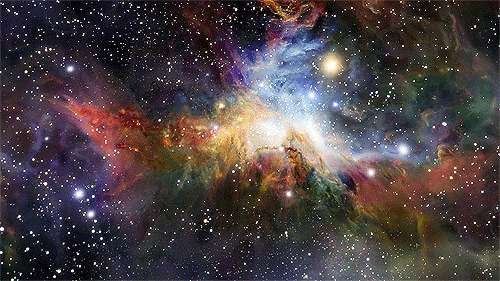
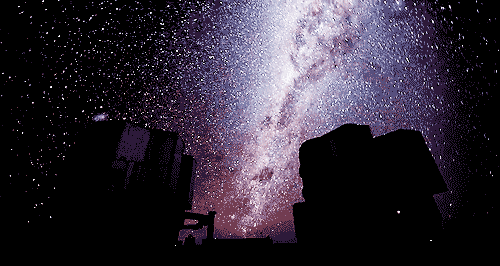
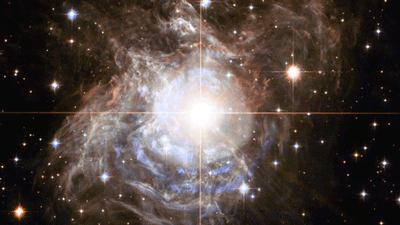

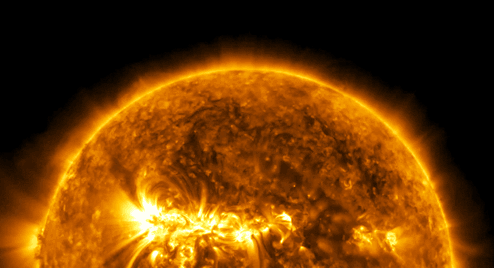
“Every one of us is, in the cosmic perspective, precious. If a human disagrees with you, let them live. In a hundred billion galaxies, you will not find another.” ~ Carl Sagan, Cosmos
Solar System: Things to Know This Week
Here are a few things you should know about our solar system this week:
1. Gearing Up for a Grand Finale

There’s just a year left until the Cassini mission begins its Grand Finale – the final phase of its mission, during which the spacecraft will dive repeatedly between the planet and the rings. To get ready, the Cassini team has launched an enhanced, mobile device-friendly version of the mission website. The site includes information about Cassini, Saturn, the moons and the rings – but it also tells the human stories behind one of the most ambitions expeditions of all time.
2.Caught in Transit

On Monday, May 9, the planet Mercury will cross directly in front of the sun, an event that hasn’t occurred since 2006 and won’t happen again until 2019. Find out how to watch HERE.
3. A Moon for Makemake

Our Hubble Space Telescope has spotted a small, dark moon orbiting Makemake (pronounced “MAH-kay MAH-kay). Make make is the second brightest icy dwarf planet – after Pluto – in the faraway Kuiper Belt.
4. The Age of the Aquarids

The Eta Aquarid meteor shower is the first of two showers that occur each year as a result of Earth passing through dust released by Halley’s Comet. This year, it should peak on the night of May 5/6. Get tips for watching HERE.
5. The Southern Lights of Saturn

On May 4, Cassini will reach periapse, the closest point to Saturn in the spacecraft’s orbit. At about this time, Cassini’s cameras will monitor Saturn’s south polar aurorae, and also image the bright limb of the planet to better understand its upper haze layers.
Want to learn more? Read our full list of the 10 things to know this week about the solar system HERE.
Make sure to follow us on Tumblr for your regular dose of space: http://nasa.tumblr.com




Nobody believed me, but I knew you’d come back.

SN 1006 Supernova Remnant by NASA, ESA and Zolt Levay
What’s Up for January?

A meteor shower, a binocular comet and the winter circle of stars. Here are the details:
Quadrantid Meteor Shower

The Quadrantid meteor shower on Jan. 4 will either sizzle or fizzle for observers in the U.S. The shower may favor the U.S. or it could favor Europe depending on which prediction turns out to be correct. For viewing in the United States, observers should start at 3 a.m. EST. The peak should last about two hours with rates of 120 meteors per hour predicted in areas with a dark sky.
Comet Catalina

In the middle of the month, midnight to predawn will be primetime for viewing Comet Catalina. It should be visible with binoculars if you have a dark sky, but a telescope would be ideal. Between the 14th and 17th the comet will pass by two stunning galaxies: M51, the whirlpool galaxy and M101, a fainter spiral galaxy.
Constellation Orion

Winter is also the best time to view the constellation Orion in the southeastern sky. Even in the city, you’ll see that it’s stars have different colors. Not telescope needed, just look up a few hours after sunset! The colorful stars of Orion are part of the winter circle of stars.
Make sure to follow us on Tumblr for your regular dose of space: http://nasa.tumblr.com


NASA Astronomy Picture of the Day 2016 January 27
An Airglow Fan from Lake to Sky
Why would the sky look like a giant fan? Airglow. The featured intermittent green glow appeared to rise from a lake through the arch of our Milky Way Galaxy, as captured last summer next to Bryce Canyon in Utah, USA. The unusual pattern was created by atmospheric gravity waves, ripples of alternating air pressure that can grow with height as the air thins, in this case about 90 kilometers up. Unlike auroras powered by collisions with energetic charged particles and seen at high latitudes, airglow is due to chemiluminescence, the production of light in a chemical reaction. More typically seen near the horizon, airglow keeps the night sky from ever being completely dark.
why am i sad
I don’t have any answer to this but I hope you feel better :’( But here is a great example of astronomy and how awesome humanity can be




Highest point in Georgia
-
 massacre-rade-magician liked this · 1 year ago
massacre-rade-magician liked this · 1 year ago -
 noumbissi7 reblogged this · 3 years ago
noumbissi7 reblogged this · 3 years ago -
 noumbissi7 liked this · 3 years ago
noumbissi7 liked this · 3 years ago -
 autumneris liked this · 5 years ago
autumneris liked this · 5 years ago -
 scienzaefantasia liked this · 5 years ago
scienzaefantasia liked this · 5 years ago -
 glittering-k liked this · 6 years ago
glittering-k liked this · 6 years ago -
 gerten-blog1 liked this · 6 years ago
gerten-blog1 liked this · 6 years ago -
 butterflyinabelljar liked this · 6 years ago
butterflyinabelljar liked this · 6 years ago -
 cliffsteele reblogged this · 6 years ago
cliffsteele reblogged this · 6 years ago -
 astra-peraspera reblogged this · 6 years ago
astra-peraspera reblogged this · 6 years ago -
 cybertimetravelblizzard liked this · 7 years ago
cybertimetravelblizzard liked this · 7 years ago -
 runbluerun liked this · 7 years ago
runbluerun liked this · 7 years ago -
 ldndragon liked this · 7 years ago
ldndragon liked this · 7 years ago -
 wolf-at-the-door reblogged this · 7 years ago
wolf-at-the-door reblogged this · 7 years ago -
 hagarthelizard reblogged this · 7 years ago
hagarthelizard reblogged this · 7 years ago -
 bangtanlovesbangtan liked this · 7 years ago
bangtanlovesbangtan liked this · 7 years ago -
 albertoyw reblogged this · 7 years ago
albertoyw reblogged this · 7 years ago -
 albertoyw liked this · 7 years ago
albertoyw liked this · 7 years ago -
 hagarthelizard reblogged this · 7 years ago
hagarthelizard reblogged this · 7 years ago -
 mthylia-sage liked this · 7 years ago
mthylia-sage liked this · 7 years ago
"Astronomy compels the soul to look upwards and leads us from this world to another." - Plato
147 posts